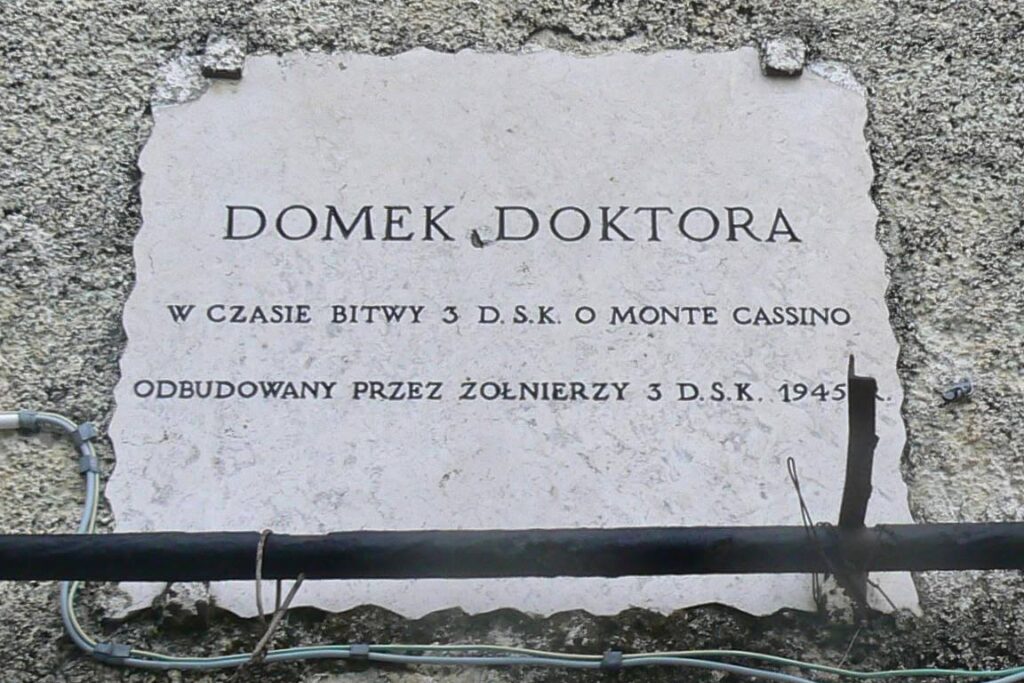The Battle of Montecassino and the places of the memory

The Second World War gave the city of Cassino and its abbey a sad role as protagonists. After the landing of the Allies, the Germans moved backwards along the Italian peninsula to hide among the mountains that go from the Tyrrhenian to the Adriatic, creating a barrier line that had as its strategic spots the reliefs around Cassino: the Gustav Line. The Allied troops were blocked along the river Rapido-Gari from December 1943 to May 1944.
In the repeated attempts to break through the Gustav Line, thousands of soldiers lost their lives. The German troops occupied Cassino but respected the sanctity of the Abbey; they refused to keep their military contingents in it and decided to rescue the monastery’s treasure as well. Unfortunately, the Anglo-Americans thought that the Abbey was part of the German defensive system, so they ordered its destruction on 15th February 1944. A month later the same happened to the underlying city of Cassino. The Gustav Line was broken only in May, also thanks to the sacrifice of young Polish soldiers. Most of the victims of the long battles of Cassino rest in the military cemeteries, which are the destination of pilgrimages from all over the world and where every year are held touching commemorative ceremonies.

The Abbey of Montecassino
Its strategic position, overlooking the only natural way through between the south of Italy and Rome, definitely determined both its fortunes and misfortunes. In its millennial history, Montecassino’s Abbey has been devastated and hardly destroyed four times; its last destruction occurred in February 1944 and was caused by the bombing of the allied forces in attempting to hunt out the German troops that were defending the Gustav Line.

Obelisk (Point 593)
It is located near Montecassino’s Abbey, where 1,052 bodies of the Polish II Corps have been buried, including the mortal remains of General Anders, who died in exile in 1970 and was moved there as his expressed desire.

The doctor’s house (Domek Doktora)
This old rural house, which was also very close to the Abbey and Point 593 (500 mt of height), was used by Polish soldiers as a little field hospital during the battles between May 12 and 18, 1944. It is still inhabited by a family nowadays.

The Sherman tank Memorial
The Sherman tank with a cross made from tank caterpillar tracks, mounted on the body of the wreckage, is dedicated to the fallen soldiers of the 4th “Skorpion” Armored Regiment. A mine destroyed the tank on May 12, 1944, killing Lt Bialecki with his crew. The memorial is standing at the very place where the tragedy happened, in memory of the fallen and the many other cruel battles fought in the area.

Cassino
On the morning of the 15th of March 1944, from about 8:30 am, the Allied forces dropped more than 1,250 tons of high-explosive bombs on the city of Cassino. At the end of the bombardment, heavy artillery fire started on the city ruins and the surroundings. In the evening, the city was made only of smoking debris. As soon as the conflict ended, the reconstruction works took place.

Cavendish Road
Cavendish Road was the ancient tank path that took from the village of Caira and Masseria Albaneta to the monastery. Its construction was ordered by General Freyberg, commander of the New Zealand Corps. It was used during the Third Battle of Cassino and then in May 1944, by the Polish Army too. The route is still accessible today.

Masseria Albaneta
Masseria Albaneta, an estate owned by the Abbey, is located in a small valley behind the monastery, downstream Point 593, and along the road that went from Caira to the monastery. The old walls of the building, which remind of a fortress, were used by the German army as a control station and a field hospital.

